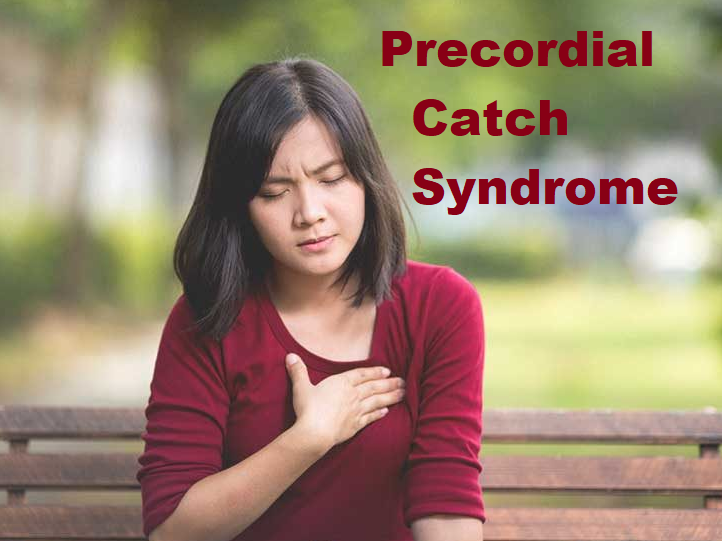Precordial Catch Syndrome is characterized by a sharp, stabbing pain that is painful to breathe around. Have you ever felt a sharp pain in your ribs, that harmed when you breathed in, then quickly disappeared?
While you might have panicked for a second thought it was a heart attack, it’s possible you were actually experiencing precordial catch syndrome, a mysterious condition that can cause sharp and sudden pains in the ribs.

Table of Contents
What is Precordial Catch Syndrome?
Precordial catch syndrome (PCS), or as it’s occasionally known, “Texidor’s Twinge”, is a condition that causes a sharp pain in the ribs that comes on and disappears quickly. PCS is usually experienced by otherwise healthy children and adolescents.
The syndrome is characterized by a sharp, stabbing pain that is painful to breathe through, often on the upper left-hand side of the ribs. The good news is that the pain will usually go away by itself within a few minutes and doesn’t cause any health difficulties.If you’ve ever experienced sharp stabbing pains in your chest, it’s possible you were experiencing precordial catch syndrome.
Doctors don’t quite know what causes PCS, though it’s believed it might have something to do with irritation of the nerves that line the chest wall. Some also think that PCS is more common during development spurts. It seems to happen most when a child is at rest, sitting, or lying down, and isn’t attended by other symptoms. The syndrome evolves much less commonly after the age of 20.
What Are the Symptoms of PCS?
The only symptom of PCS is sudden, stabbing pain in the chest, usually targeted around the upper left side of the ribs, close to the heart. The pain covers a very small area, lasts for a few minutes (or less), and goes away on its own.
While the pain is present, it may harm breathing deeply. Some people begin to take short, shallow breaths in an effort to escape the pain.
The intensity of the pain may differ from person to person. Some explain the pain as dull, annoying, or aching. Others experience severe pain that is stabbing and, in rarer cases, may induce temporary blurred vision.
Pain from PCS often happens when a child or adolescent is at rest or doing a very mild activity. The pain may come just once or numerous times in a day.
It usually comes in isolated incidents and may not occur again, or it may happen suddenly after spans of days with no symptoms.
There are no other symptoms of PCS. A physical examination will not disclose any conditions or irregularities associated with PCS, and it does not cause long-term health issues.
Symptoms NOT associated with PCS
The pain from PCS does not cause tenderness in the chest area. It also does not spread to further areas of the chest, as would happen in the case of a heart attack.
People undergoing PCS do not show paleness or flushing of the skin. PCS does not cause wheezing or alterations in pulse.
Because PCS usually leads to shallow breathing (as taking deep breaths becomes painful), a person may feel some lightheadedness as an indirect side effect—but PCS does not cause lightheadedness or dizziness directly.
What should I do if my child has chest pains?
It’s always wise to treat chest pain seriously. If there are any further symptoms accompanying your child’s pain, like nausea, vomiting, headache, dizziness, or shortness of breath, or the pain doesn’t go away quickly, you should seek immediate medical help.
Unexplained chest pain might cause you or your child some discernible anxiety. Even if your child’s chest pain is brief and doesn’t seem to be connected to further health concerns, raise it with your GP. If it’s PCS, have them explain what’s happening to you and your child, so the condition doesn’t keep causing you extreme worry.
You can forever call 13 HEALTH (13 43 25 84) 7 days a week, 24 hours a day, with any questions about your health or your child’s health. If you feel the situation is an emergency, call Triple Zero (000) for an ambulance immediately.
Treatment
Treatment is not needed for PCS, as the pain will resolve on its own and does not have lasting health effects.
There are some things you can do at home to assist ease the pain when it occurs, particularly for children.
- Encourage slow breathing: For some people, taking a slow, deep breath (although painful in the wink) causes the pain to stop afterward. This doesn’t work for everyone, so if your child won’t take deep breaths, you can rather have them focus on taking gentle and small breaths.
- Help them sit up: Try having your child rest and change their posture from a slouching or bent position to sitting upright or standing straight up. Encouraging your child to practice good posture, sitting up tall with shoulders back, may assist to prevent PCS from occurring again.
- Try medication: If a child or adolescent is experiencing PCS on a regular basis, your doctor may recommend anti-inflammatory medicine to help relieve the pain at the moment. You can acquire over-the-counter (OTC) anti-inflammatory drugs at your local pharmacy.
- Ease their fears: It may also help to reassure your child that this condition is harmless and will go away soon. This can assist to alleviate anxiety and allow the child to relax, which may allow the pain to resolve sooner.
